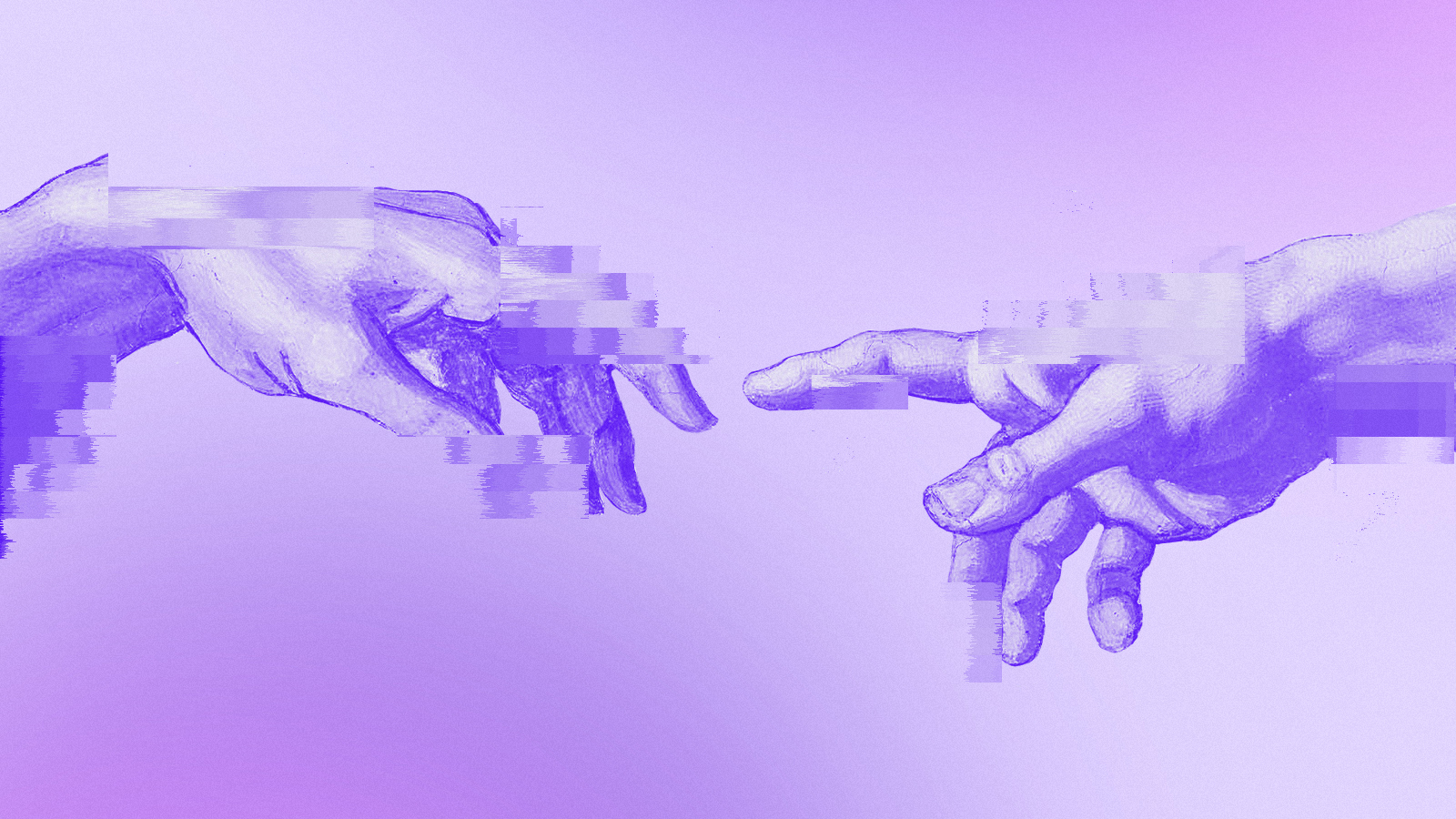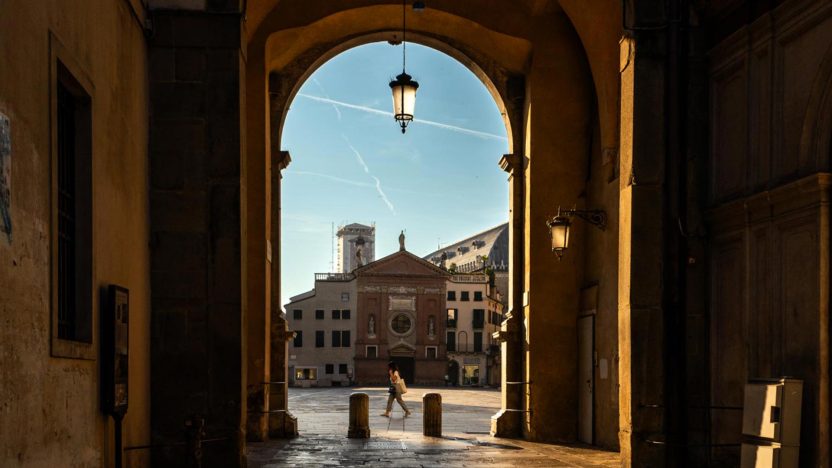The Sistine Chapel in my living room
The relationship between technology, cultural heritage and the digitalization of museums.
by Paolo Frosina

What do seemingly backward-looking establishments like museums have to do with 3D printing, QR codes, IoT, virtual reality, and artificial intelligence? According to Anna Maria Marras, a lot more than one would think. An archaeologist and researcher at the University of Turin, Anna Maria is the coordinator of the Digital technologies Committee for Cultural Heritage at the Italian chapter of ICOM (International Council of Museums). She encourages cultural organizations to keep up with the times, helping them develop successful digital strategies. She is the mastermind behind the “Liquid Museum” project, an initiative of the National Archaeological Museum of Cagliari (Sardinia’s largest city) designed to create a museum that is totally accessible to all visitors: physically, cognitively, and digitally. “The relationship between technology and cultural heritage is pretty much an odi et amo”, she summarizes. “On the one hand, most museum directors are aware that they need to open up their venues to a broader audience. That awareness has strongly increased during the pandemic. On the other hand, there’s still the fear that digital visits could eventually replace physical ones, often considered the only ‘real’ way to enjoy a museum. Actually, the two ways to visit are complementary and can be even mixed to create hybrid museum experiences”.
The main barrier to creating digital-friendly museums, she argues, is the lack of a digital mindset. “You can’t say cultural institutions aren’t addressing this issue,” she clarifies. “They are, but often in the wrong way. Opening a Facebook account and filling it with tons of posts isn’t enough. What you need is to invest your funds to hire consultants with strong humanistic and digital skills, to help build a tailored long-term strategy”. That is precisely what Anna Maria does. Defining the strategy relies on the museum’s heritage, its budget, and its ability to attract new funds, she explains. “The first challenge is digital cataloging. Museums should have a digital version of their collections: photos, data, and descriptions, both of what is on display and what’s not. In Italy, less than 50% of museums meet this simple goal. The best practices are applied in science and technology museums, which in many cases have hired dedicated people to work on digitalization. The Science and Technology Museum in Milan, for instance, can be considered a benchmark”.
In Anna Maria’s view, the key to achieving a good result is to take a step-by-step approach. “You shouldn’t try to digitize huge collections in just a few days,” she argues. “You could make fundamental mistakes that ultimately impact the entire operation. You have to carefully choose image resolution, data format, and storage location. Not everyone invests in tools like network attached storage (NAS), cloud storage, or servers. I’ve seen museums put their data in ordinary hard disks and then abandon them in a desk drawer”. Then, as a complementary step, the digitized content should be made available on the museum’s website, creating nothing less than an open online catalog. Only a few organizations in the world have completed the whole process: “Even the Louvre only finished uploading its data a few months ago,” Marras says. Indeed, the Parisian museum now offers a daily updated “collection database” that includes more than 480,000 works of art, divided into categories (paintings, sculptures, furniture, and more) and thematic albums (such as “Masterpieces,” “2020 acquisitions,” “The art of portraits,” and so on). Users can download images of each work of art and reuse them under an open license and the terms of use set by the Museum. They can also access a broad set of textual information about it, which shouldn’t contain too many technical or uncommon expressions, to ensure the general public can understand it.
But these are just the basics: there are many more digital tools available to art and culture. Among the most popular are virtual tours, which hundreds of institutions chose to implement during the 2020 lockdown. Sitting on a couch, through the screen of a laptop, everyone can dive into a 3D reconstruction of the Boboli Garden’s Buontalenti Grotto, walk through the halls of the Egyptian Museum in Turin, or admire the frescoes in the Sistine Chapel. Building an experience that actually resembles the physical one, however, is no easy job. “To offer a virtual tour, you have to develop an immersive experience in which users can feel as if they are in the real museum,” Marras says. “This means not only filming or photographing the works of art, but digitally recreating the halls, the museum building, and all the elements that contribute to the visit. Digital guests must be able to roam freely, look around, and get up close to the statues and paintings, just like in the non-digital museum. And there should be digital hotspots, places where visitors can get information, explanations or even interact with the treasures”.
So what if the “analog” visit became a bit more technological? “Museums,” adds Marras, “should consider developing augmented reality systems, such as eyepieces, to help guests discover more than what they can see: for instance, how a painting looked before being restored, a simulated reconstruction of an archaeological site, figures or words digitally added to art objects.” Artificial intelligence technologies such as image recognition can also play a role: “There are apps like Smartify that people can use while visiting some museums. When you point your smartphone at a painting, it tells you its title, author, and other information about it.” Conversational interfaces like voice assistants are the next step to enable people to interact with works of art and cultural heritage organizations.
Using 3D printing, artwork can be reproduced and placed right next to their originals in the halls so that visitors can feel and touch them, which is also the primary accessibility solution for blind guests. “Everyone appreciates having a physical experience with an object more than just looking at it through a display case,” she argues. “Furthermore, 3D printing can make miniaturized replicas that are completely faithful to the original works. Some museums even make model files available so visitors can print them at home.”
Clearly, digital tools are nearly countless. But there’s still some work to do on a basic one: “Some museums don’t even have proper websites,” the researcher reveals. “Or, if they do, they’re poorly accessible, unresponsive, don’t have an online ticketing service, let alone an online shop. In many cases, they have poor content and a poor user experience, too.” A digital divide that Covid-19 has helped to bridge. “Many experts are just looking forward to when museums can re-open their doors. But I think that they should not waste the development they have experienced during these months. Museums should keep investing in digital technologies to reach more people, including those who live far away, can’t travel, or can’t afford a ticket. Thanks to the pandemic, museums have learned to care for their communities, to reach out to them. As we say, they’ve rediscovered their social mission. Digitizing means sharing knowledge and beauty with others. And, in that sense, it’s an ethical imperative.”


